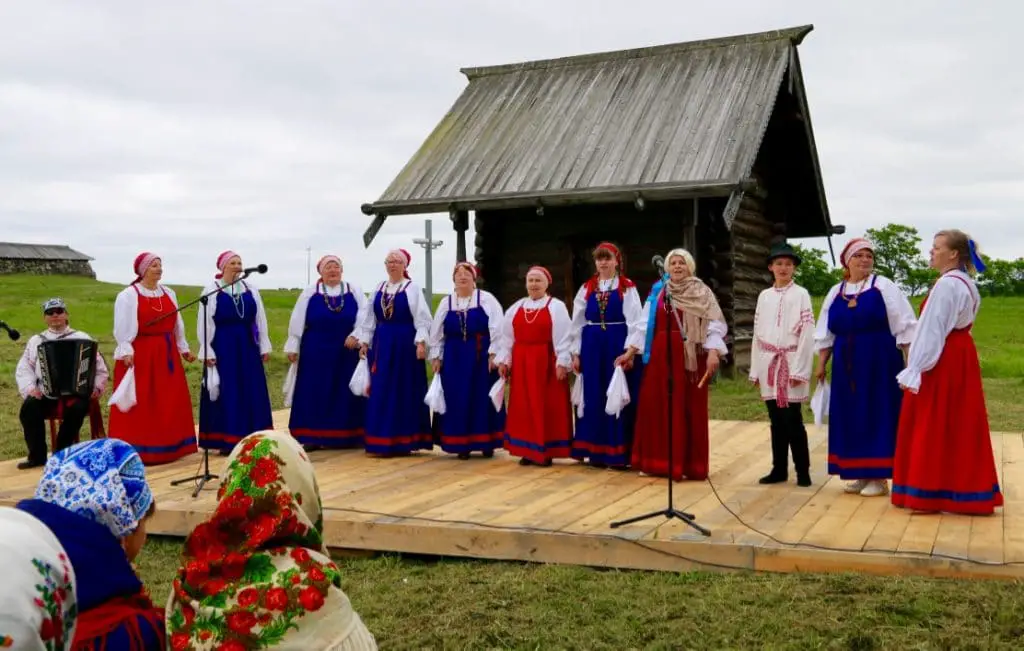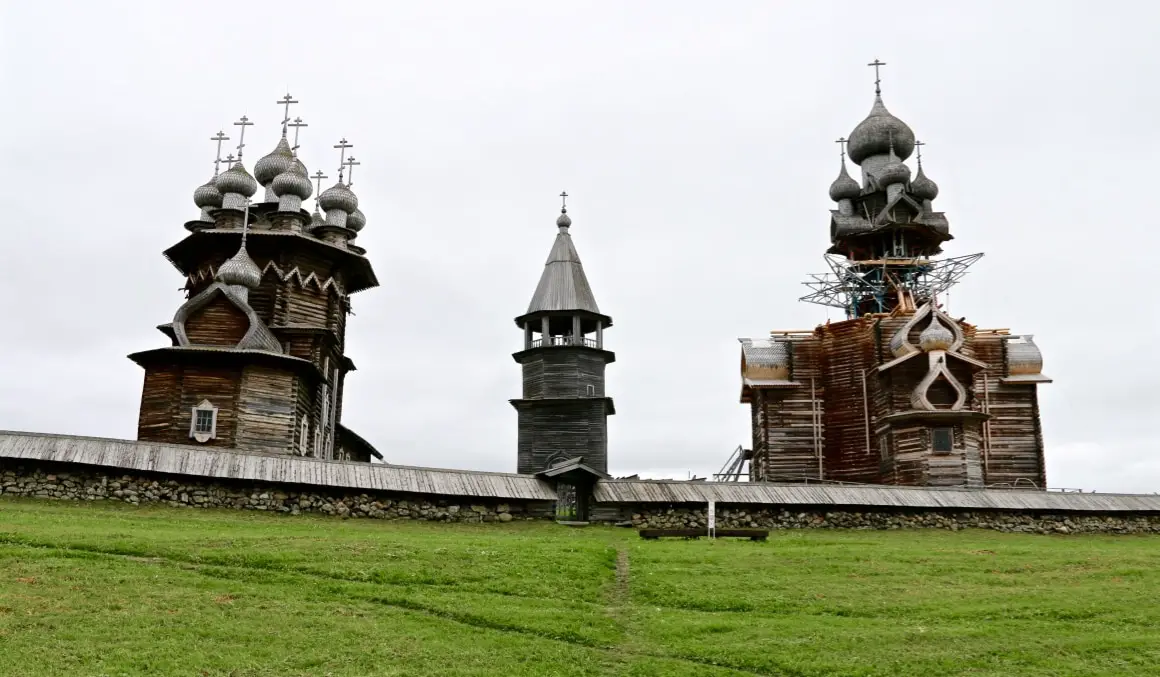Kizhi Pogost and the island on which it stands function as an architecture museum, hosting a number of wooden structures built with traditional Russian designs and construction methods. Restoration and preservation efforts are currently underway at the facility to protect the structures, some of which date to the 17th century.
Most tourists arrive to the museum via the closest major city: St. Petersburg. The approximately six-hour journey begins with an overnight sleeper train from Saint Petersburg’s Ladozhskiy Station to Petrozavodsk-Pass Station (make sure to bring your original passport). Tourists can then reach the island via hydrofoil (a bumpy but easy trip across the lake), spend the whole day exploring the sites, return to Petrozavodsk, then return on another overnight train to Saint Petersburg. Several tour companies offer tickets and guided excursions. Their offices are located nearby the docks.
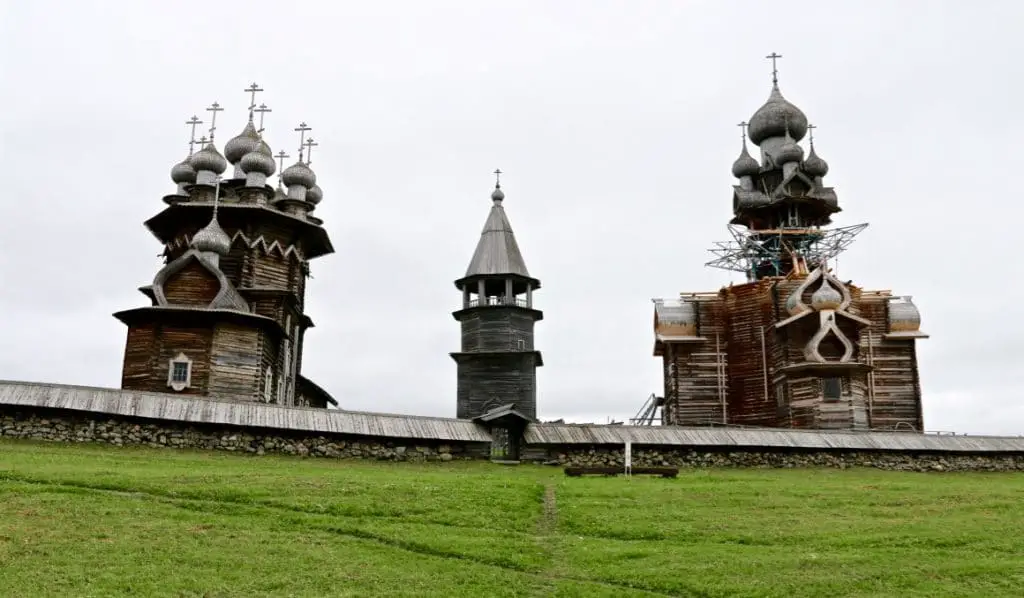
There is a short walk and the walking path is raised, on wooden beams, and later becomes a flat, gravelly road, until you reach the pogost. A pogost is an old Russian term that referred to an administrative territory, usually at the prefer of Russia’s ever-growing empire. Often they functioned as way stations for traveling royalty, trading centers, and military outposts. Kizhi was originally constructed to take advantage of the region’s copper deposits. Today, however, pogost is an archaic term, and most often refers to the main structures of the former border settlements. In Kizhi, the pogost today consists of the three main structures within the walled territory: The Church of the Transfiguration; The Church of the Intercession; and the Belfry. In total, however, the museum contains 87 wooden constructions.
Because the island is small and narrow, it is not easy to get lost, and the paths are well marked. On the way, there is a restaurant and a number of small shops that sell souvenirs. There are also toilets, which can be used for a small fee. No smoking is allowed near the wooden structures, but there are a few areas reserved for smokers near the bathrooms.
Kizhi Island is unique, in part, because it is an open-air museum. The structures – houses, windmills, chapels, central churches, and several others – are also not just there as permanent exhibitions of architecture, but are also used as the background for fascinating exhibitions of social history and ethnography. All together, it gives an excellent glimpse into life in the Republic of Karelia from the 17th to the late 19th centuries. Kizhi Pogost is recognized in Russia as highly masterful carpentry and represents some of the best of Russian architecture.
The Church of the Transfiguration, which is in the process of being restored, is the tallest structure on the island. With its striking silvery domes, 22 in all, it stands at 37 meters tall and can be seen from all the neighboring islands. After a fire destroyed the original church, it was rebuilt in 1714 without using a single piece of metal, but instead small wooden pegs that acted as nails and resisted wear. Today, as part of the restoration, the church has been fortified with metal pylons, nails, and scaffolding. At one point, the entire structure was elevated a few centimeters above the ground while the foundation was strengthened. Now, part of each of the church’s seven octagonal levels is being removed and restored by experts. Though the missing domes may make the church appear to be lacking, the restoration process in view is a fascinating look at how fragile buildings are maintained. Furthermore, the restoration offers a unique photo opportunity to reveal and record the complex construction of ancient wooden churches.
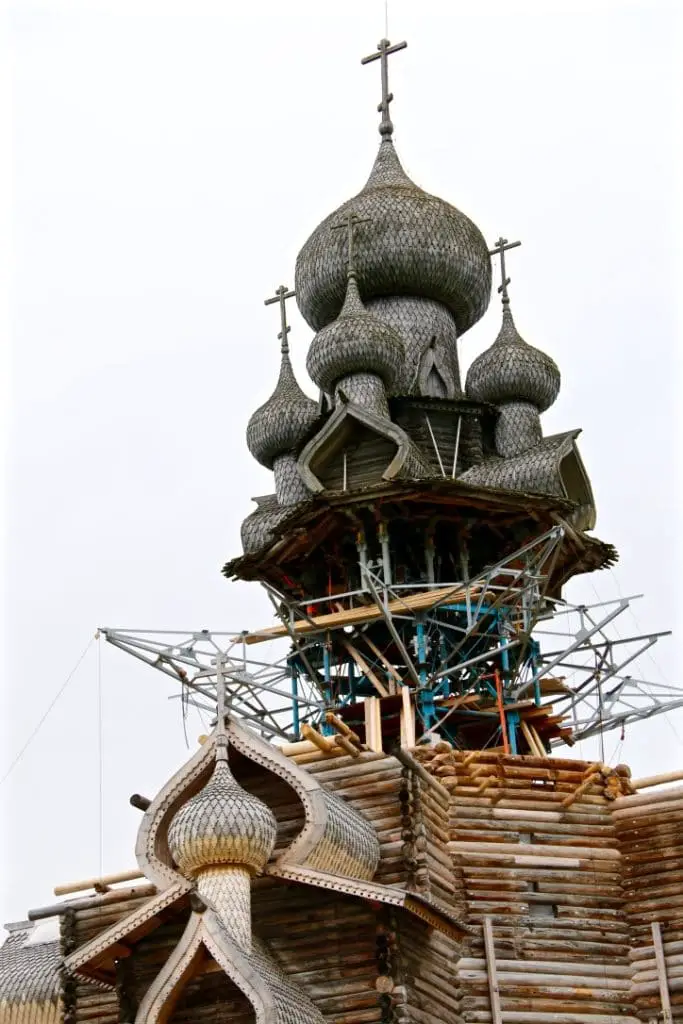
Elsewhere on the island, museum employees and volunteers help bring the past to life. Inside one home, which was used as the set of Konstantin Levin’s home in the film Anna Karenina (2012), a woman works diligently on a red and white needlepoint design by memory, with no template. The homes have open rooms with dark wood and no ornate decorations. A baby cradle hangs from the ceiling and could be rotated to be close to the mother. In the corner, there is a stove, where the mother could prepare oatmeal and hot water early in the morning. Small twigs with fire on the end give light (like candles) and are placed over a bucket of water, for safety precautions (since the entire structure is wood) and to project the light to the rest of the room. An elaborate loom is located in one corner, near the window. Also notable are the very low doorways, which keep in the heat. The home’s “treasures” are stored in the next room; these include several trunks for the dowry, a silver samovar, and paintings of the family. General visitors were not usually invited in this room. Equipment for the animals and manual labor is stored in the second half of the home. There is a small boat, a sled for two or three horses, and a spinning wheel.
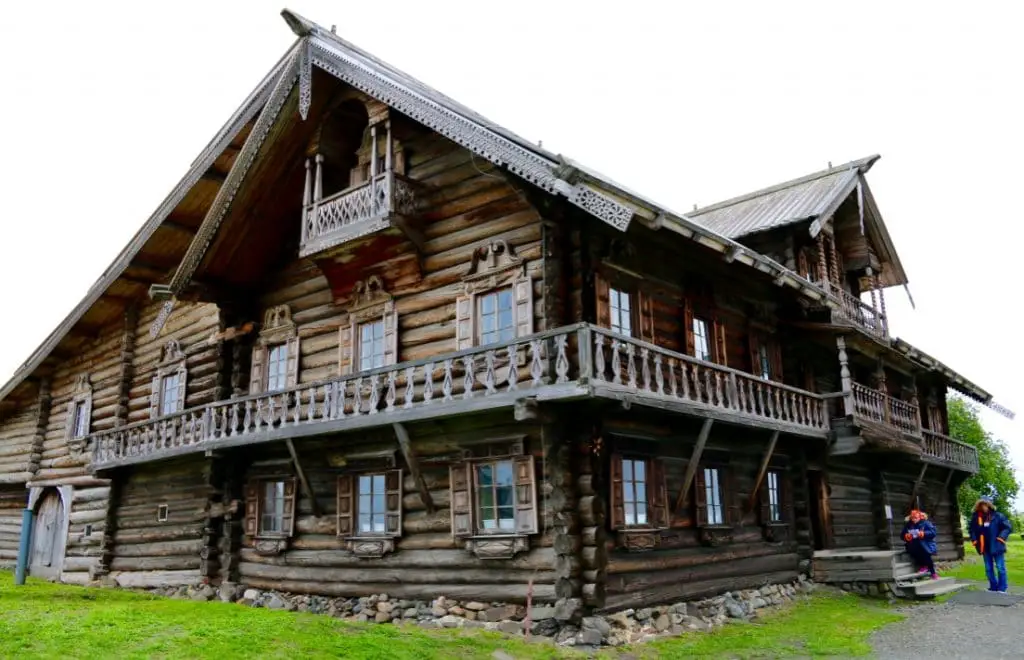
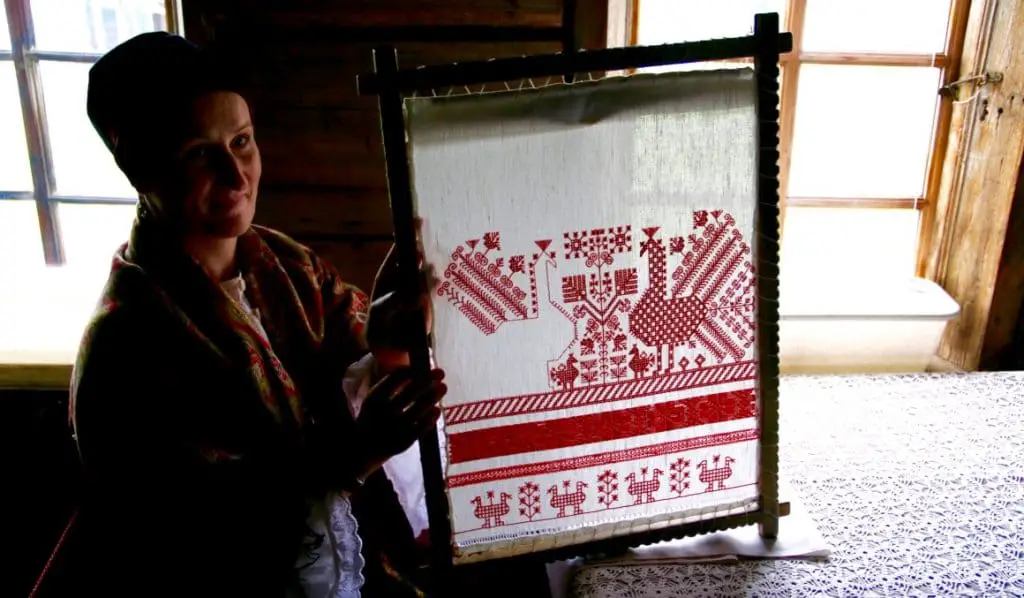
Outside, a man chips away from small planks of wood to fashion dolls and little toys for children. He is not too far from the home’s banya, which is an enclosed bathhouse. The banya is very close to the lake, which provided some relief when the steam got too hot. Near the main path, an elderly man stands in the top of a belfry and rings the bells to signal the arrival of noon. There is a large windmill here, which could be rotated from the bottom by horsepower. The island is not protected from the wind, so harvesting this sort of power is highly resourceful.
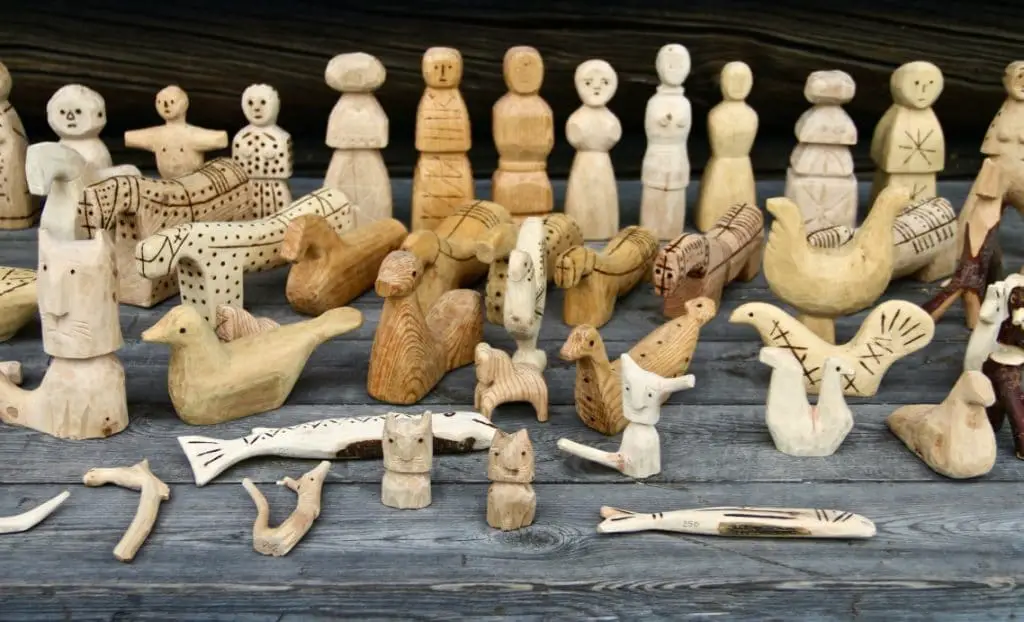
On the afternoon we arrived, a lively festival brought local culture and past tradition together. Poetry reading, accordion playing, group singing, and ensemble dancing – before a crowd of adoring, cheering people – made the festival special and timeless. There was even a group of young children, who, with the patient help of their supervisors, memorized and performed a short rhyme and dance. With colorful headscarves, local officials, and community spirit, it is well worth scheduling an excursion during one of these summer festivals. On festival days, which are frequent during the summer and tourist season, volunteers prepare buckwheat porridge, meat pies, smoked fish, and tea for no cost. For students interested in seeing another side of Russia, Kizhi is a beautiful way to explore the scenic Russian countryside.
